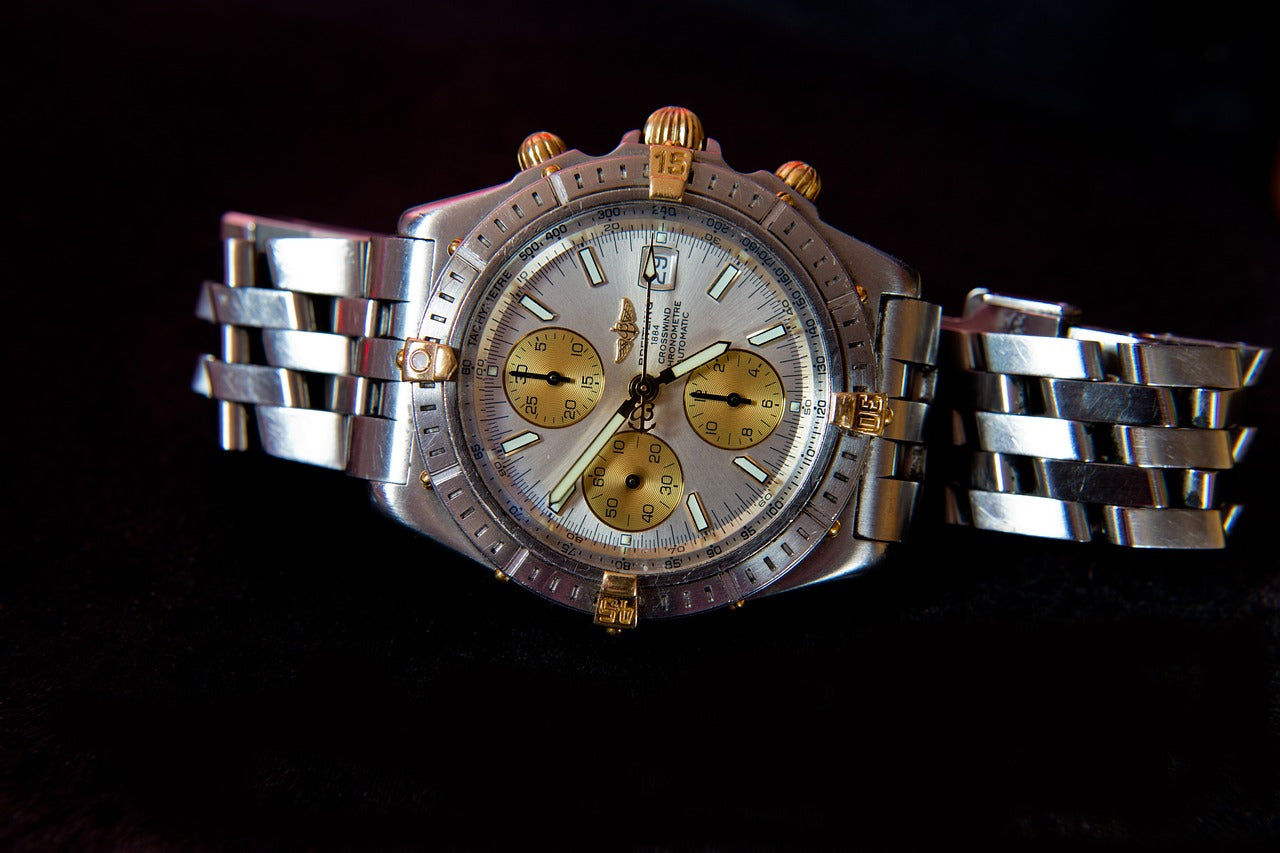
Why Are Watches Made Of Stainless Steel?
Watches have long been considered symbols of style and status. Over the centuries, they've evolved to feature not only an array of designs, but also a wide diversity of materials. In the realm of modern watchmaking, however, stainless steel proudly dominates. But why is stainless steel such a favoured material in watch manufacturing?
A watch needs to be handsome, but it also needs to be durable - a faithful companion that can withstand the test of time. So, when crafting wristwatches, the choice of material is a critical decision. It wouldn't be an exaggeration to say that the success and longevity of watch depends upon this vital choice. With this in mind, let's delve into the reasons why stainless steel takes the crown.
Definition: What is Stainless Steel?
Before diving into why watches are made of stainless steel, let's first define what stainless steel is. Primarily, stainless steel is a type of steel that is highly resistant to rust and stain. It contains around 10.5% to 30% of chromium by mass, which makes it highly corrosion-resistant, a factor highly appreciated in the watch industry.
In its elemental form, chromium is a hard, silver-colored metal that is often used to harden steel, produce stainless steel, and form several important alloys. The presence of chromium creates an invisible, corrosion-resistant, protective oxide surface. This oxide layer is ‘self-healing’. It survives even when the material is cut or damaged. Now that we have an understanding of what stainless steel is, we can explore why this metal is a preferred choice in watchmaking.
History: A Brief History of Stainless Steel Use in Watches.

The use of stainless steel in the watch-making industry traces its roots back to the early 20th century. Initially, watch cases were made from precious metals like gold and silver. In 1934, Swiss watch company 'Invicta' introduced the first-ever watch made with a stainless steel case, marking the beginning of an era.
The Second World War accelerated the use of steel in watch manufacturing, as gold was being conserved for war efforts. Watchmakers started to appreciate steel's durability, resistance to corrosion, and its more accessible cost.
Over the years, stainless steel has proved its worth in the horlogy industry, becoming synonymous with sturdiness, affordability, and longevity. Upon reflecting on our own LUCA watches' collection, it's evident; the story of stainless steel is woven deeply into our chronicles.
Durability: The Role of Stainless Steel in Enhancing Watch Durability.
Why are many high-end watches manufactured using stainless steel? Well, it all boils down to durability.
Stainless steel, characterised by its strong resistance to corrosion, wear, and tear, is a top-choice material. The relentless beating of time that our watches undergo calls for resilience. Stainless steel answers that call.
Its inherent toughness makes it perfect for watches which are expected to last for generations. From everyday use exposure, to occasional accidental knocks, stainless steel watches stand taller and stronger.
Furthermore, its superior strength-to-weight ratio attributes to both durability and wearer comfort. The material is light enough to wear on the wrist daily, yet sturdy enough to withstand the test of time.
In essence, stainless steel contributes significantly to the longevity and timelessness of watches, affirming its prime position in the world of horology.
Corrosion and Rust Resistance: Why Stainless Steel Watches don't Rust.
Without a doubt, one of the biggest selling points of stainless steel watches is their resistance to corrosion and rust.
Stainless steel itself is an iron-carbon alloy, but it's the added chromium that gives this material its rust-resistance. The chromium forms a thin, invisible layer of chrome oxide on the surface of the steel. Even if the material is scratched or damaged, this layer can self-heal, making stainless steel a brilliant choice for timepieces.
Warped, discoloured or rusted watches are a thing of the past.
In highly humid environments or if you're often in contact with water, a stainless steel watch won't let you down. This intrinsic property of stainless steel ties in perfectly with the durability and timeless aesthetics.
And let's not forget, rust resistance adds value for money, as your watch will stand the test of time, quite literally.
Aesthetic Appeal: The Beauty of Stainless Steel Watches
Stainless steel brings with it an air of elegance and minimalistic beauty that many luxury watches need, adding to their overall aesthetic appeal.
This material provides sleek, clean lines and a modern appeal whilst maintaining its classic simplicity. Its silvery glow can be polished to a mirror-like finish, or brushed for a subtler, matte look, appealing to a variety of styles and tastes.
Moreover, stainless steel's color is neutral, making it versatile and easy to pair with any outfit. It's at once bold enough to make a statement, and subdued enough not to demand attention.
Lastly, part of this material's aesthetic value lies in its longevity. Over time, as the watch faces daily wear and tear, it may develop unique patterns. These 'scars' make the watch more personal and thereby, more beautiful to the wearer.
Hypoallergenic Properties: Why Stainless Steel is a Great Choice for Sensitive Skin.
One of the notable properties of stainless steel that amplifies its suitability for personal accessories like watches is its hypoallergenic nature.
People with sensitive skin often grapple with allergies to certain metals. Fortunately, stainless steel mitigates this concern.
It is non-reactive to our skin, reducing potential irritations due to metal allergies. This makes it an excellent choice for those who suffer from metal sensitivities or simply have sensitive skin.
Also, the chromium in stainless steel forms a protective, resisting layer against rust, thereby keeping the skin safe from any potential harm.
No more fretting about unsightly rashes, redness, or irritation.
With a stainless-steel timepiece from LUCA Watches, you receive a combination of style, durability, and comfort, even for the most sensitive skin. Enjoy the pleasure of wearing a watch without any discomfort. After all, luxury should never come at the cost of your well-being.
Stainless steel is not just about durability – it's about your skin's health too.
Variety of Finishes and Styles: The Versatility of Stainless Steel in Watch Design.

One of the most advantageous aspects of stainless steel is its versatility in design. The material allows for a variety of finishes, from a high gloss polish to a silken matte.
Many luxury watches, like those produced by LUCA Watches, feature intricate engravings and detailing made possible by the flexible nature of stainless steel.
This versatility extends to color. Watches can range from classic silver to vibrant golds, muted bronzes and even inky blacks, all achieved through treatments and finishes applied to the stainless steel surface.
Adding to this versatility, stainless steel also offers robustness and durability. It ensures the watch's designs stay in perfect condition and lose none of their elegance over time.
At the intersection of style, strength, and sophistication, stainless steel is a stalwart choice for watch design.
Cost Efficiency: The Affordability of Stainless Steel Compared to Other Materials.
Considered from a cost perspective, stainless steel is an affordable choice for high-end watches, while not compromising on quality.
Comparatively, it's a more budget-friendly option than traditional luxury watchmaking materials, like gold or platinum. Stainless steel doesn't necessarily correlate with a "cheap" appearance or lack of durability. In fact, it is celebrated for its robustness and longevity.
Stainless steel also enables brands such as LUCA Watches to craft exquisite timepieces priced for the discerning customer who demands both elegance and value.
It's these compelling reasons that contribute to the wide use of stainless steel in watchmaking, striking a fine balance between affordability, durability, and aesthetic appeal.
In the end, cost efficiency does matter--not just for the company, but for the final customer as well.